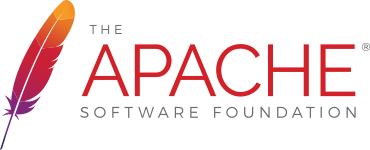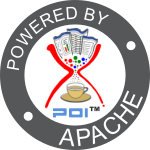Upgrading to POI 3.5, including converting existing HSSF Usermodel code to SS Usermodel (for XSSF and HSSF)
Things that have to be changed when upgrading to POI 3.5
Wherever possible, we have tried to ensure that you can use your existing POI code with POI 3.5 without requiring any changes. However, Java doesn't always make that easy, and unfortunately there are a few changes that may be required for some users.
org.apache.poi.hssf.usermodel.HSSFFormulaEvaluator.CellValue
Annoyingly, java will not let you access a static inner class via a child of the parent one. So, all references to org.apache.poi.hssf.usermodel.HSSFFormulaEvaluator.CellValue will need to be changed to org.apache.poi.ss.usermodel.FormulaEvaluator.CellValue
org.apache.poi.hssf.usermodel.HSSFRow.MissingCellPolicy
Annoyingly, java will not let you access a static inner class via a child of the parent one. So, all references to org.apache.poi.hssf.usermodel.HSSFRow.MissingCellPolicy will need to be changed to org.apache.poi.ss.usermodel.Row.MissingCellPolicy
DDF and org.apache.poi.hssf.record.RecordFormatException
Previously, record level errors within DDF would throw an exception from the hssf class hierarchy. Now, record level errors within DDF will throw a more general RecordFormatException, org.apache.poi.util.RecordFormatException
In addition, org.apache.poi.hssf.record.RecordFormatException has been changed to inherit from the new org.apache.poi.util.RecordFormatException, so you may wish to change catches of the hssf version to the new util version.
Converting existing HSSF Usermodel code to SS Usermodel (for XSSF and HSSF)
Why change?
If you have existing HSSF usermodel code that works just fine, and you don't want to use the new OOXML XSSF support, then you probably don't need to. Your existing HSSF only code will continue to work just fine.
However, if you want to be able to work with both HSSF for your .xls files, and also XSSF for .xslx files, then you will need to make some slight tweaks to your code.
org.apache.poi.ss.usermodel
The new SS usermodel (org.apache.poi.ss.usermodel) is very heavily based on the old HSSF usermodel (org.apache.poi.hssf.usermodel). The main difference is that the package name and class names have been tweaked to remove HSSF from them. Otherwise, the new SS Usermodel interfaces should provide the same functionality.
Constructors
Calling the empty HSSFWorkbook remains as the way to create a new, empty Workbook object. To open an existing Workbook, you should now call WorkbookFactory.create(inp).
For all other cases when you would have called a Usermodel constructor, such as 'new HSSFRichTextString()' or 'new HSSFDataFormat', you should instead use a CreationHelper. There's a method on the Workbook to get a CreationHelper, and the CreationHelper will then handle constructing new objects for you.
Other Code
For all other code, generally change a reference from org.apache.poi.hssf.usermodel.HSSFFoo to a reference to org.apache.poi.ss.usermodel.Foo. Method signatures should otherwise remain the same, and it should all then work for both XSSF and HSSF.
Worked Examples
Old HSSF Code
New, generic SS Usermodel Code
by Nick Burch



